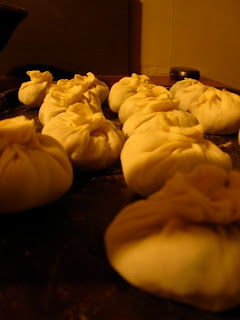Kombucha. Sometimes it really hits the spot as I smack my lips after that first big gulp. It is a tangy zingy zap of flavor that quenches my thirst. I've started making it myself because its so durned cheap. I flavor and ferment it to my liking and can chug it all week long. I have high aspirations of a kombucha schedule to carry me through the summer so we never ever have to buy over-sugared, over-packaged and over-priced juice again.
The kombucha "mother" is a colony of yeast and bacteria, a living being with a complicated personality. Sometimes my kombucha mother works hard and sometimes it is sluggish, I am slowly deciphering what it needs to be a happy and productive citizen.
First things first...I know people who grow their own mother from scratch but I have heard recent report of a friend whose kombucha supposedly drowned through this method? I didn't get the details. So the biggest step is to get a hold of someone who is already making their own kombucha. Any person regularly making kombucha is going to have a mother to give away every few weeks, so make sure you get both a mother and some of the kombucha tea.
When I'm not brewing I put the "mother" to sleep in the fridge.
These are my steps for brewing:
I put about four quarts of water in a big pot and leave it out overnight to off-gas. (yikes!!)
The next day I brew my sweet tea using the water left overnight. For the tea brew I have been alternating between
The Republic of Teas bulk pomegranate green tea or their mango black tea. Both are delicious but there is a world of inspiring tea flavors out there to try. I use fabric tea bags that I can wash and reuse over and over. I fill my tea bag full and throw it into the pot of just boiled water with 3/4 cups of sugar. I have yet to experiment with other sweeteners like honey and agave syrup but its worth a shot. I let my tea steep overnight and pull my mother out of the fridge at this time so it can reach room temperature. The mother needs to be at room temp. to be active and should not be added to hot tea.
The next day the mother and the sweet tea find themselves at room temperature and consequently it is time for worlds to collide. I pour my tea into a glass gallon jar. I add my mother and about 1/2 - 1 Cup of the kombucha that was carrying the mother. Make sure your hands and the equipment are clean at this point and all throughout to avoid icky contamination problems. I use a thin cloth with a rubber band to cover my gallon jar as this allows air flow and prevents critters.
I put the jar in a cool dark place and try not to disturb it while its doing its thang. Originally I left my kombucha to brew for a week, but it wasn't enough fermenting time for my taste and came out pretty sweet. Now I brew it for 11-14 days depending on when I can get to it. This is going to be a matter of taste. The longer it brews and breaks down sugar, the more vinegary it will get.
When I get around to bottling the booch, I remove my mother with clean hands and store it in a jar covered with more brew. Back into the fridge it goes to rest or straight into another batch and another fermenting session. The mother will grow another layer each time it brews a batch. You can just peel off a layer and give it away, compost it, give it to the chickens..whatever. I have noticed the mother works best when it is separated regularly and not allowed to build up too many layers.
I bottle the rest of my booch and let it rest at room temperature for at least three days. (I really like these bottles I got from Ikea...3 bucks yo!!!)
This is where the fizzy fizz happens. The longer I leave it out before refrigerating, the more carbonation happens. When you just cant wait any longer throw it in the fridge then pop it open.
Next step...smack those lips.













